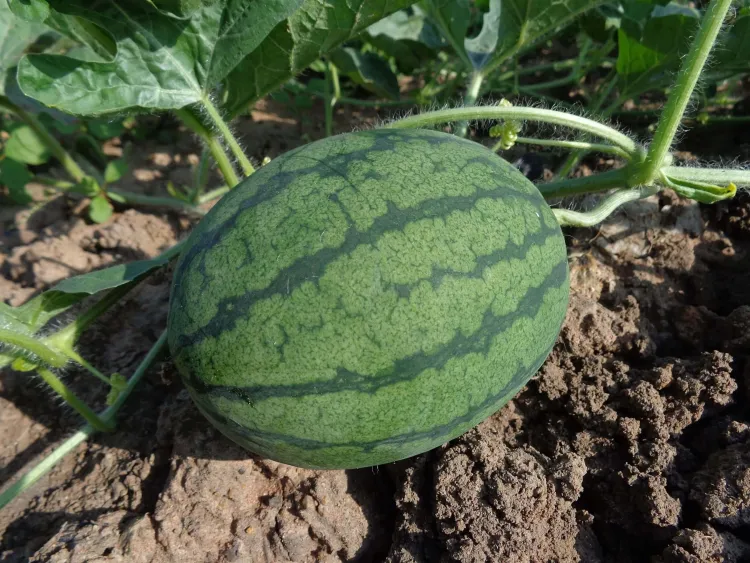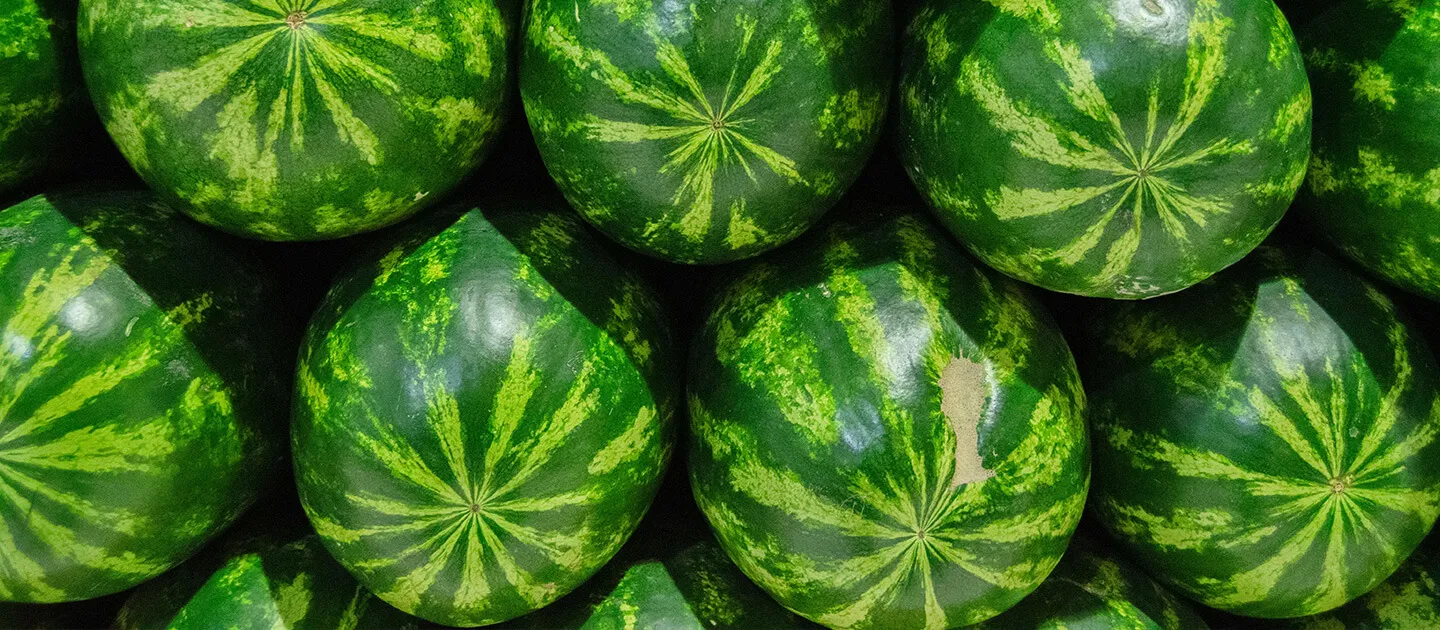There are few things as refreshing on a hot summer day as a slice of watermelon (Citrullus Lanatus). At over 90 percent water, watermelons are a tasty way to keep hydrated with an added bonus of vitamins and minerals.
If you’d like to try your hand at growing your own watermelon, you’ll need a location with rich, well-draining soil that receives at least six hours of direct sun daily. A soil test can provide recommendations for fertilizing. You can find more information on obtaining a soil test here: https://go.uvm.edu/soiltest.
Be sure to have sufficient space for the variety you choose. Smaller watermelons could be grown vertically, training the vines to climb a sturdy trellis with support such as slings for the fruit.

Your biggest decision will be choosing which variety to grow. Do you prefer an heirloom or a hybrid variety? Full-size melons or one just big enough for a person or two? There are seeded and seedless varieties. Choices include the familiar, red-fleshed watermelon as well as orange, pink, yellow or white varieties.
Before you make a final decision, check the days to harvest for the variety you’re considering. Be sure there are enough days in your growing season for the watermelon to mature and be ready to harvest.
To do so, determine your anticipated last and first frost dates. The number of days between those dates is the length of your growing season. You can find the average last and first frost dates for your location here: https://garden.org/apps/frost-dates.
Since watermelons require warm temperatures, you may be sowing seeds or transplanting seedlings two weeks after the last frost date. The variety you choose should be ready to harvest within that number of days or you may be disappointed in the fall when a killing frost puts an end to your plants before you’ve had a chance to harvest.
Prepare the watermelon bed by removing weeds and adding any needed soil amendments. A layer of mulch can help prevent weeds and keep moisture levels in the soil more consistent.
To direct sow watermelon seeds, plant several seeds, each an inch deep, in groups 4 to 5 feet apart. Once seedlings have emerged, choose the strongest, healthiest plant and thin seedlings to one per group. See the seed packet for variety-specific information.
If you started seeds indoors or plan to purchase starter plants, be sure to harden them off before transplanting. Once the soil temperature is above 60 degrees Fahrenheit, you can safely move plants to the garden. For best results, try to disturb the roots as little as possible. See https://go.uvm.edu/starter-plants for more information on preparing plants for transplanting.
The soil should receive a deep soaking of water, 1 to 2 inches a week, either from rain or supplemental watering. When watering, avoid getting the foliage wet as this could lead to disease issues. Overwatering close to harvest could result in the fruit splitting.
There are several ways to determine when a watermelon is ready to harvest. The skin color becomes dull. Tendrils near the watermelon dry out and become brown. The area on the bottom of the watermelon where it touches the soil yellows.
Watermelons are related to cucumbers, pumpkins and squash, so keep an eye out for pests such as cucumber beetles and squash vine borers.
If you would like more information about growing watermelons or have home gardening questions, the University of Vermont Extension Master Gardener Helpline is available to help at https://go.uvm.edu/gardeninghelp.
